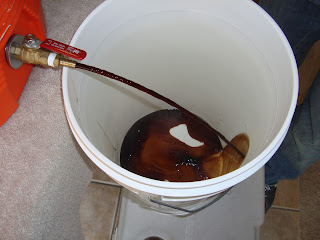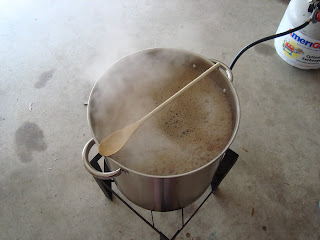Wow, time flies when work is so much fun. Although my blog
has fallen behind a little bit, luckily my brewing has not. Going to try and
catch up in the next few weeks and to get started I need to go back in time to
February. As I thought about my next brew I looked at the weather and a cold
snap was coming so I decided that the best beer for the cold was a stout. After
searching on Homebrew Talk I found a fairly simple stout recipe, so simply it
was Stupidly Simple.
After getting the grains and supplies from Austin Homebrew it
was time to brew. After letting the grains mash for an hour it was time to
drain.
After the initial drain and sparge were complete, I set
about for the boil. It was pretty cold but I had the fire and some coffee to
keep me warm
There is an old adage that a watched pot never boils. I
proved that wrong, way wrong. Just as I was about to get comfortable in my
folding chair the foam from the wort started to reach the top of the pot. After
removing the wort from the flame I turned to another old remedy, a wooden spoon
on the top of the pot to avoid a boil over. Not sure if it worked but I did not
have another problem with a boil over.
Once the boil was done it was into the fermenter but not
before a sample gravity reading.

Now it was time to wait for the fermentation to complete,
more on that soon though.
Prost!







